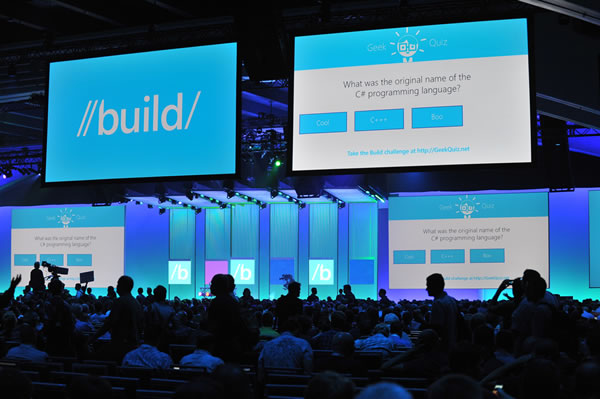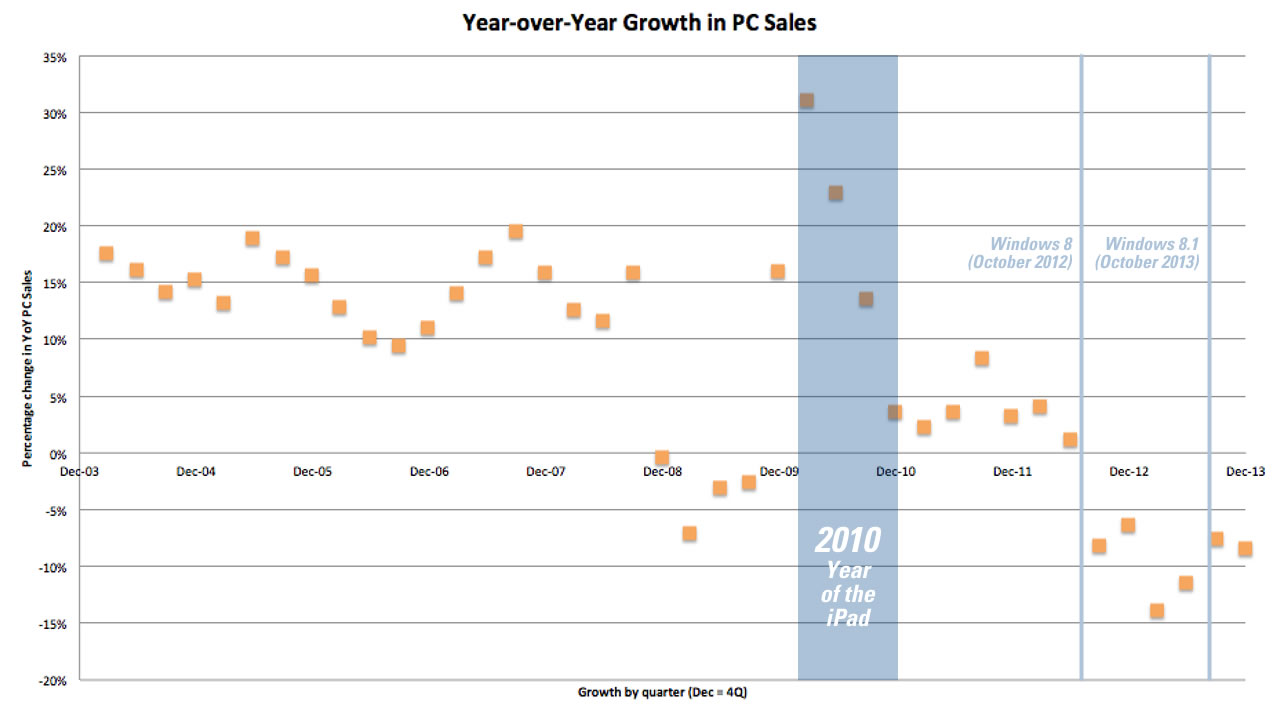Back in September 2011, I posted this image in an article titled We’ll Know For Sure Next Year, and it’s been getting a lot of hits lately:
I think the graphic is wrong in a few ways — I thought 3.1 was only acceptable, 95 was good, and 98 was “meh” — and it’s missing Windows 2000, which I thought was good. It’s put Windows 8 under “meh”, as I always kick it into desktop mode, which effectively makes it Windows 7 with a couple of improvements and a downgraded Start menu. What’s your take?
Graph adapted from Stratechery. Click to see it at full size.
Last week’s post on Ben Thompson’s blog, Stratechery, looks at the prevailing wisdom that the steady decline in PC sales from 2010 on were caused by tablets and longer PC lifecycles and adds a third cause: Windows 8. While the drop in 2010 — the year the iPad came out — is the most dramatic, the next most precipitous drop came in the wake of Windows 8’s release. Thompson writes:
In other words, instead of alleviating the problems facing PCs – no reason to buy – Windows 8′s increased complexity added a reason not to buy. That was certainly the case in my family: in early 2013, when my father asked me for advice on a Windows computer, I found myself advising him to seek out Windows 7. Were he to have had a suitable computer, I likely would have advised him to do nothing at all.
It’s difficult to see where Microsoft goes from here; contrary to what you might expect, there is still minimal overlap between Windows 8 and Windows Phone, meaning apps made for one are incompatible with the other. Abandoning either means effectively starting from zero in that respective form factor – and pissing off a lot of partners. Yet there’s little question in my mind that the touch environment is hastening the decline of PCs suited for the Windows desktop, even as the desktop ruins what is honestly a rather delightful tablet experience.
My experience is pretty much the same as Thompson’s. I’ve helped a number of friends and family upgrade existing computers or buy new ones, and most of them, even those who bought touchscreen-equipped machines, have resisted Windows 8, considering the interface formerly known as Metro to be useless (if you’ll pardon the term) “window dressing”. Those who went with Windows 8 have generally kept it in desktop mode, and once Windows 8.1 came out, they followed the steps to make it boot into desktop mode and bypass “Modern UI” altogether.
As of this writing, Windows 8.1 is running on fewer than 25 million PCs at this moment, one of which is my sidekick machine, a ThinkPad T430. Considering that it’s a free upgrade and fixes a number of issues with Windows 8, this number is bad. Even Microsoft’s biggest non-“blue badge” evangelist, Paul Thurrot, has used the word “disaster” for this figure. In comparison, Samsung sold half as many Android-based tablets during Q4 2013, and Apple moved 25 million iPads in the same period.

The next Windows, whose codename is “Threshold” and whose official name will be Windows 9, is expected to ship in April 2015, one year after the upcoming Build conference. Microsoft’s biggest non-“blue badge” evangelist, Paul Thurrot, is already singing its praises in a number of posts:
- Microsoft to Take Windows to the “Threshold”
- Further Changes Coming in Windows “Threshold”
- Big Changes Are Coming to Windows
- “Threshold” to be Called Windows 9, Ship in April 2015
For Windows 9, if the pattern holds true, it should be “good”. Until it comes out, I’ll have to say the same thing about Windows 8 back in 2011: We’ll know for sure next year.

